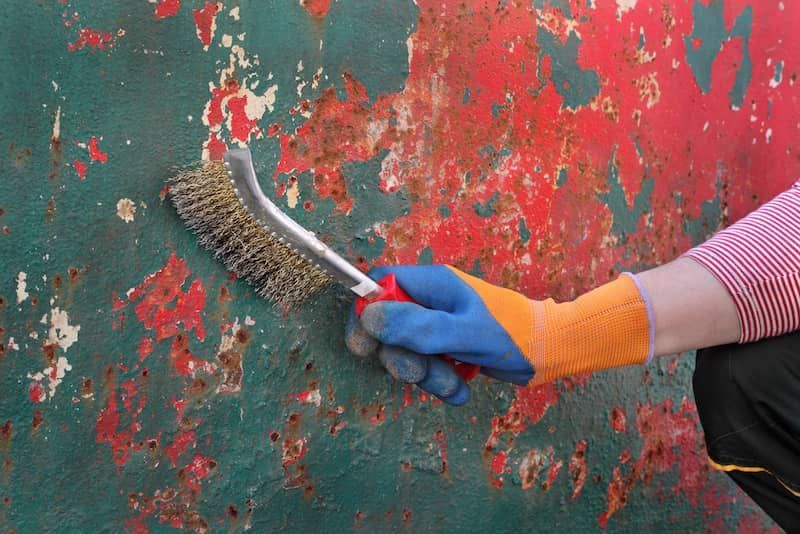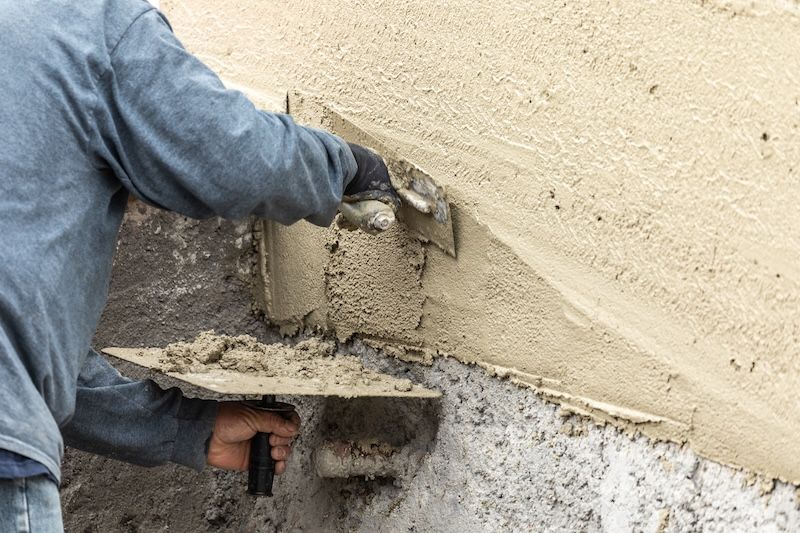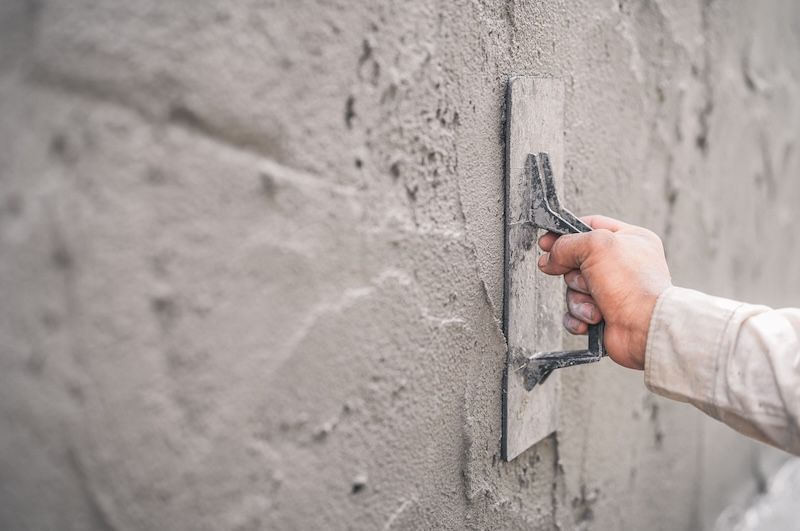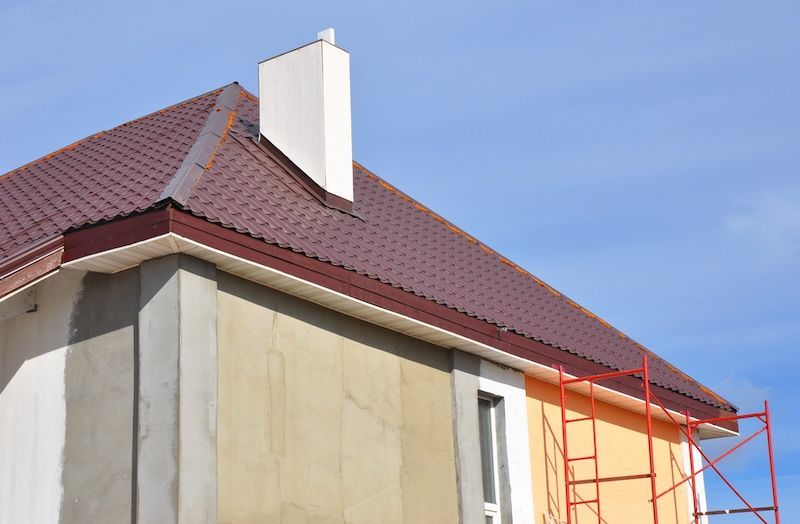Simply put, a
stucco wall is a type of wall surface constructed from aggregate, binder, and water. People love it for its aesthetics, versatility, and durable nature. But, like any other wall, stucco wall challenges exist, primarily regarding the impact of weather on paint longevity.
Paint plays a pivotal role in protecting stucco walls against natural elements. It is a defense shield, safeguarding the wall from water intrusion, solar damage, and other environmental factors. An aptly painted stucco wall boosts curb appeal and enhances structural integrity.
Weather, unfortunately, is a relentless adversary to your stucco wall's paint. Heat, cold, rain, and frost all contribute to the premature degradation of paint, leaving the underlying stucco vulnerable. This blog post explores these stucco wall challenges in detail.
What is Paint Failure?
Paint failure refers to the degradation or loss of a paint's ability to adhere to the surface. In the context of stucco walls, it leads to visible issues like peeling, blistering, or cracking, often accelerating the need for stucco wall repair.
Moreover, stucco wall challenges manifest in different ways. Common signs of paint failure include visible cracks, blisters, or flakes. You might also notice an unusual powdery residue, known as chalking, on the surface.
Spotting these issues early can be a game-changer. Early intervention by
stucco repair contractors can prevent minor problems from escalating into major structural concerns. A regular inspection ensures your wall remains in good health for longer.
How Weather Affects Stucco Wall Paint
Here is a detailed look at how different weather conditions impact stucco wall paint:
Weather-related paint deterioration is primarily due to the paint's expansion and contraction. Heat makes it expand and lose its adherence, while cold makes it contract and become brittle, leading to cracks. Moisture from rain or humidity can seep into these cracks, causing the paint to peel off.
Types of Weather-Related Paint Failures on Stucco Walls
Various weather conditions can cause specific types of paint failures on stucco walls. Let's dive into common ones like blistering, cracking, peeling, and chalking.
A. Blistering
Blistering paint is a sign of heat or moisture damage. It manifests as small to large bubbles on the paint surface, indicating that the paint has lost its bond with the underlying stucco.
B. Cracking or Crazing
Cracking or crazing happens when the paint becomes brittle due to cold or frost or expands too much due to heat. It's a telltale sign that you must contact
stucco contractors for repair.
C. Peeling or Flaking
Peeling or flaking paint usually results from moisture seepage or poor paint adhesion. It leaves parts of your stucco wall exposed and vulnerable to further damage.
D. Chalking
Chalking occurs when a powdery residue forms on the paint surface. It results from the degradation of the paint binder due to exposure to weather elements, leaving pigment particles loose.
Preventative Measures to Protect Stucco Wall Challenges on Paint
Preventing paint failure is less costly and easier than dealing with repairs. You can proactively guard your stucco wall against common weather-induced challenges by implementing a few strategic steps.
A. Selection of Suitable Paint for Different Weather Conditions
Choosing the right paint can mitigate many stucco wall challenges. Paints designed for specific weather conditions can more effectively resist the damaging effects of the sun, rain, or frost.
B. Best Practices in Applying Paint
Proper application is key. Ensure the stucco wall is clean, dry, and properly primed before painting. Apply the paint evenly and in the right conditions to enhance its longevity.
C. Regular Inspection and Maintenance
Regular inspections provide early warnings of paint failure. Timely interventions by stucco repair contractors can prevent minor issues from snowballing into costly repairs.
Remedies for Weather-Related Paint Failures
When faced with weather-induced paint failures, there are steps you can take for recovery. This section explores how to address blistering, cracked, peeling, or chalking paint.
A. Steps to Fix Blistering Paint
Fixing blistering paint involves scraping off the blisters, priming the exposed stucco, and repainting the area. You may need professional stucco contractors to ensure the job gets done correctly.
B. Repairing Cracked or Crazed Paint
Cracked paint is repairable by removing loose paint, filling in the cracks, and repainting the area. Professional stucco repair contractors can provide expert service.
C. How to Handle Peeling or Flaking Paint
It is essential to scrape off peeling paint, the area must be primed, and new paint should be applied. Regular maintenance can help prevent this stucco wall challenge.
D. Addressing the Issue of Chalking Paint
To remedy chalking, remove the chalky residue, prime the wall, and repaint it with quality paint designed to withstand the elements.
Inspection and maintenance will help navigate stucco wall challenges!
In conclusion, weather is a major factor in stucco wall challenges, affecting the longevity of the paint. Heat, cold, and moisture all contribute to paint failure, necessitating stucco wall repair.
Preventative measures can extend paint life, like choosing the right paint and applying it correctly. Prompt repairs by skilled stucco repair contractors can halt minor issues, saving you from more significant, costlier repairs.
Remember, stucco walls are as robust as their weakest paint. Regular inspection and maintenance are vital. For professional help, don't hesitate to contact stucco contractors with expertise in handling stucco wall challenges.
One such team of professionals is
Orlando Stucco Repair Pros, known for their skilled craftsmanship and reliable services in handling all kinds of stucco wall challenges.



